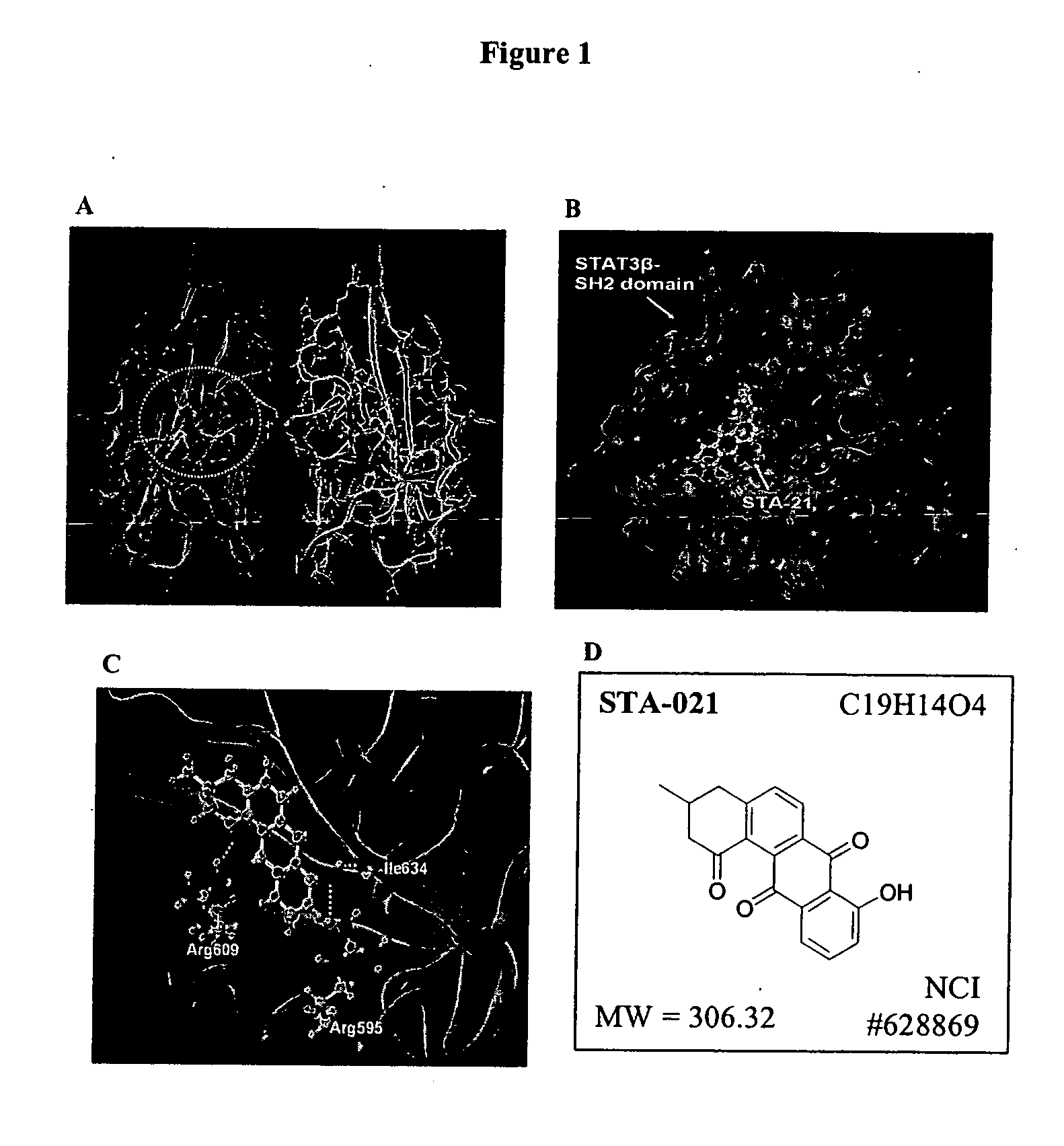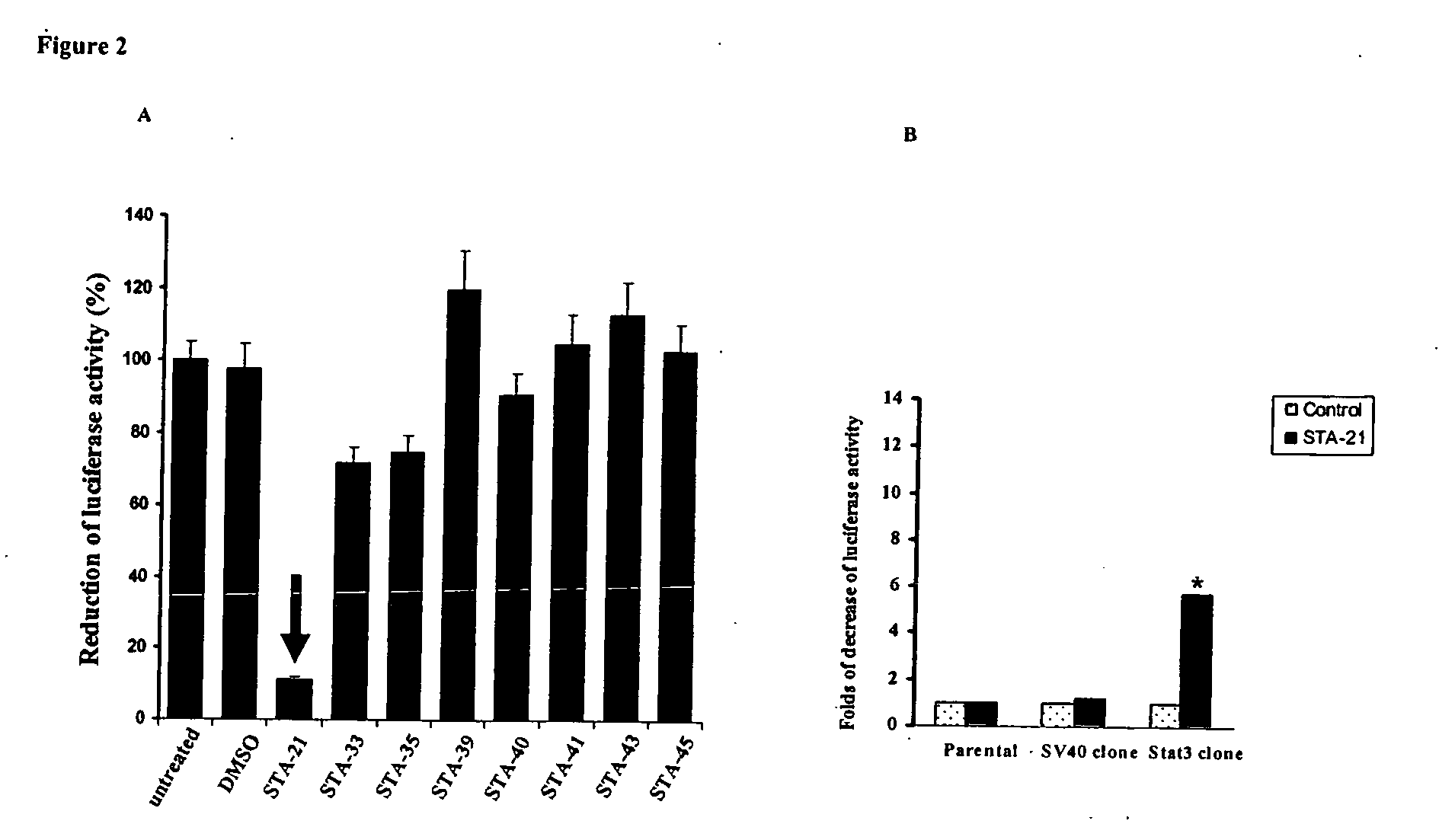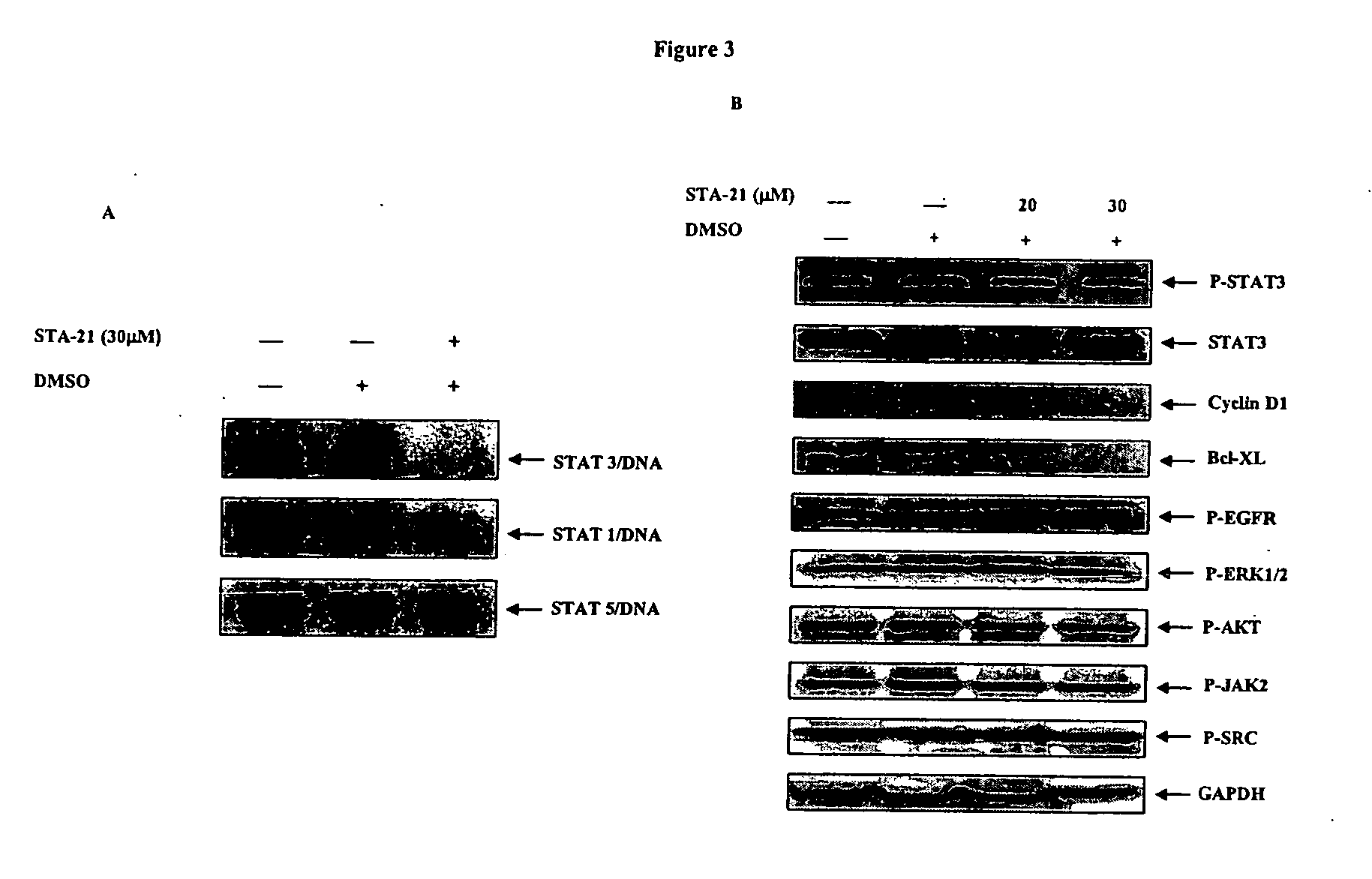Small molecule inhibitors of STAT3 and the uses thereof
a stat3 inhibitor and small molecule technology, applied in the field of medicinal chemistry, to achieve the effect of less toxic, less toxic, and greater tumor response and clinical benefi
- Summary
- Abstract
- Description
- Claims
- Application Information
AI Technical Summary
Benefits of technology
Problems solved by technology
Method used
Image
Examples
example 1
Structure-Based Virtual Screening for Stat3 Inhibitors
[0082] The three-dimensional structure of STAT3β homodimer shows that the dimerization of Stat3β occurs between two SH2 domains (FIG. 1A) (Becker et al., Nature 394:145 (1998); Berman et al., Nucleic Acids Res. 28:235 (2000)). These two SH2 domains are hinged together by a loop segment (Ala702-Phe716) from each monomer. The phosphoryl tyrosine (Y-705) critical for Stat3β's biological function is located in this loop segment, and it binds together with four adjacent amino acid residues to a cavity on the SH2 domain of the other monomer.
[0083] In order to identify small molecules that may disturb the dimerization process of Stat3β, the crystal structure of Stat3β solved at 2.25 Å resolution (entry 1BG1 in the Protein Data Bank) was employed in this study. The three-dimensional structure of Stat3β homodimer bound to DNA was directly obtained from Dr. C. W. Muller. The chemical databases in the virtual screening effort included the...
example 2
Effect of STA-21 on Stat3 Transcriptional Activity
[0086] The 100 selected inhibitors were evaluated using a Stat3 luciferase reporter system. Both MDA-MB-435s breast carcinoma cells and Caov-3 ovarian carcinoma cells express constitutively activated Stat3 (Song et al., Int. J. Oncol. 24:1017 (2004); Song et al., Biochem. Biophys. Res. Commun. 314:143 (2004)). Cloned cells were established from these two cell lines by stable transfection of a Stat3-dependent luciferase reporter, pLucTKS3 (Turkson et al., Mol. Cell. Biol. 18:2545 (1998)). Plasmid pLucTKS3 contains seven copies of Stat3-binding site in TK minimal promoter and its activation specifically depends on Stat3 status in cell environment. pLucTKS3 and pLucSV40 luciferase (a control plasmid lacking Stat3 binding sites) reporter plasmids were transfected into Caov-3 and MDA-MB-435s cell lines using Lipofectamine 2000 reagent. The stable clones, which showed high luciferase activity, were selected for screening Stat3 inhibitors....
example 3
Effect of STA-21 on Factors Upstream and Downstream of Stat3
[0088] It was next examined whether or not STA-21 could reduce Stat3 DNA binding activity using electrophoretic mobility shift assays as reported (Turkson et al., J. Biol. Chem. 276:45443 (2001)). In MDA-MB-435s breast carcinoma cells with constitutive Stat3 signaling, high Stat3 DNA binding activity was observed (FIG. 3A). In contrast, MCF10A and TERT breast cells without constitutive Stat3 signaling did not show Stat3 DNA binding activity. STA-21 (30 μM) inhibited Stat3 DNA binding activity (FIG. 3A). In MDA-MB-468 breast carcinoma cells with constitutive Stat3 signaling, STA-21 (20 or 30 μM) also inhibited the downstream anti-apoptotic effector Bcl-XL as shown by Western blot analysis (FIG. 3B). Interestingly, the phosphorylation of Stat3 upstream regulators JAK2 (P-JAK2), Src (P-Src), and EGFR (P-EGFR) were not affected by STA-21 (FIG. 3B). Combined with the results of STA-21 inhibition of Stat3 but not Stat1 and Stat5...
PUM
| Property | Measurement | Unit |
|---|---|---|
| Dynamic viscosity | aaaaa | aaaaa |
| Chemotherapeutic properties | aaaaa | aaaaa |
| Hyperproliferative | aaaaa | aaaaa |
Abstract
Description
Claims
Application Information
 Login to View More
Login to View More - R&D
- Intellectual Property
- Life Sciences
- Materials
- Tech Scout
- Unparalleled Data Quality
- Higher Quality Content
- 60% Fewer Hallucinations
Browse by: Latest US Patents, China's latest patents, Technical Efficacy Thesaurus, Application Domain, Technology Topic, Popular Technical Reports.
© 2025 PatSnap. All rights reserved.Legal|Privacy policy|Modern Slavery Act Transparency Statement|Sitemap|About US| Contact US: help@patsnap.com



